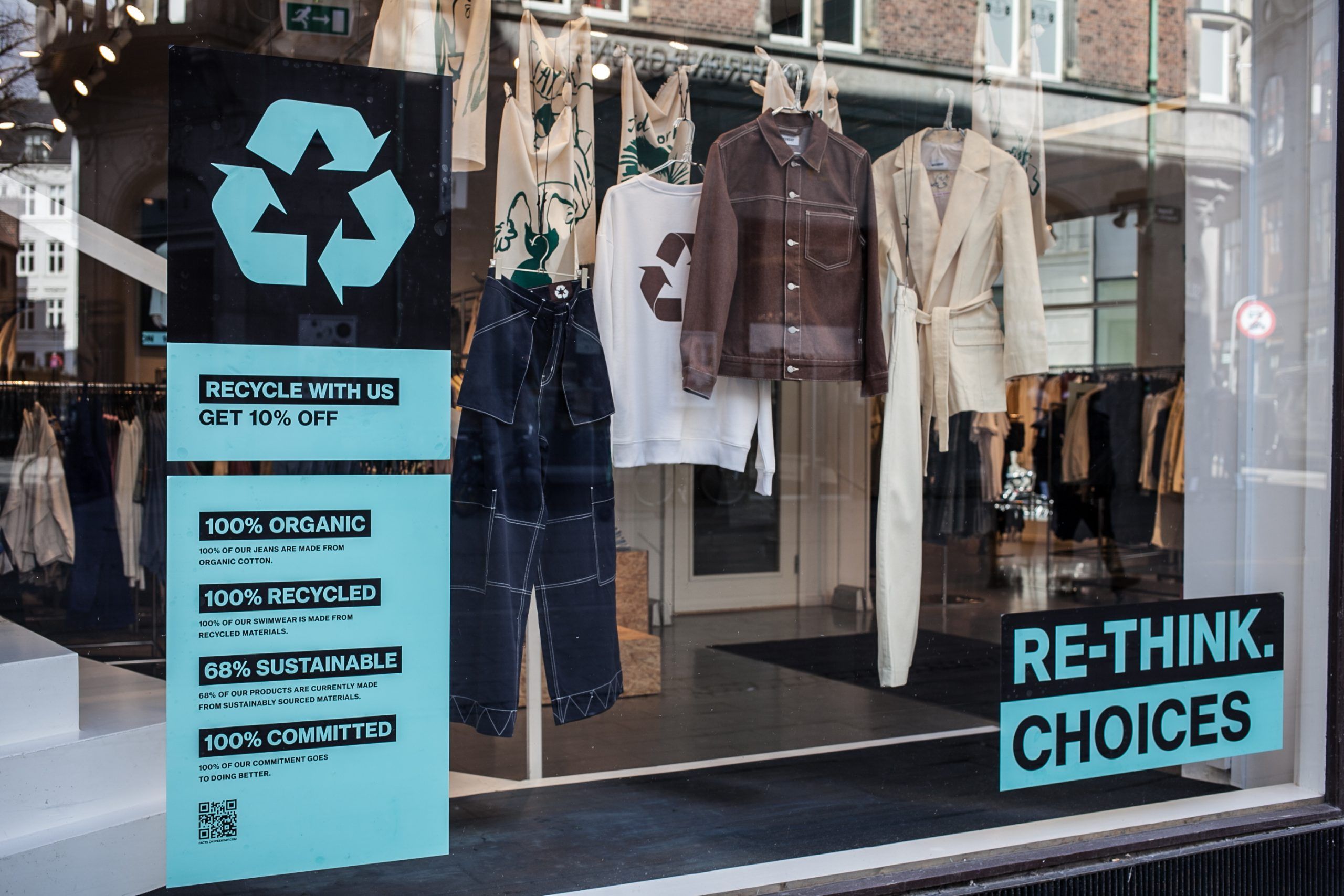
Sustainable fashion is here to stay. While some have decried it as a trend, the growing number of brands, either starting-up or adapting, to become sustainable is showing us that this is a growing sector of the fashion industry—and with good reason.
Environmental benefits aside, consumers are clamoring for brands that share their views. As we’ve shared in a previous blog, transparency and sustainability is key for apparel eCommerce webstores. According to Forbes, if your brand isn’t helping consumers improve their environmental and social footprint, you’re in danger of disappointing 88% of them.
In the post-COVID-19 world, customers want pieces that last, says the New York Times. There is a shift in focus from newness to longevity, not just in the products, but also in the companies that make them.
If your fashion brand is one of the many that is already prioritizing sustainability, you’re clearly in a favorable position. But the benefit is only there if consumers know about it. So how do you showcase your brand’s sustainability? Read on for six tips on how to do just that, and reap the benefits.
Have a clear mission statement
Sustainability can look like many things—for Los Angeles Apparel, it means committing to paying their workers a fair living wage, providing employees equity in the company and creating more jobs with their local factory. For Courtyard LA, it’s about using sustainable fabrics and releasing limited ranges to reduce their effect on the environment. Whatever sustainability looks like for you and your business, you need to make it clear to your customers. That’s where a mission statement comes in handy. Create a separate page on your webstore with text, images or video that outlines your commitment to sustainability. It should sum up your approach in a few sentences, while also leaving you the ability to then expand on it. Reflect on your values and how your brand embodies them. Are you committed to raising awareness of environmental issues, reducing your and others’ impacts on the planet, reusing existing products? Or all of the above? Spell it out like New York designer Mara Hoffman does on her website. Her statement is honest and personal, acknowledging that sustainability is a journey that her brand is committed to.
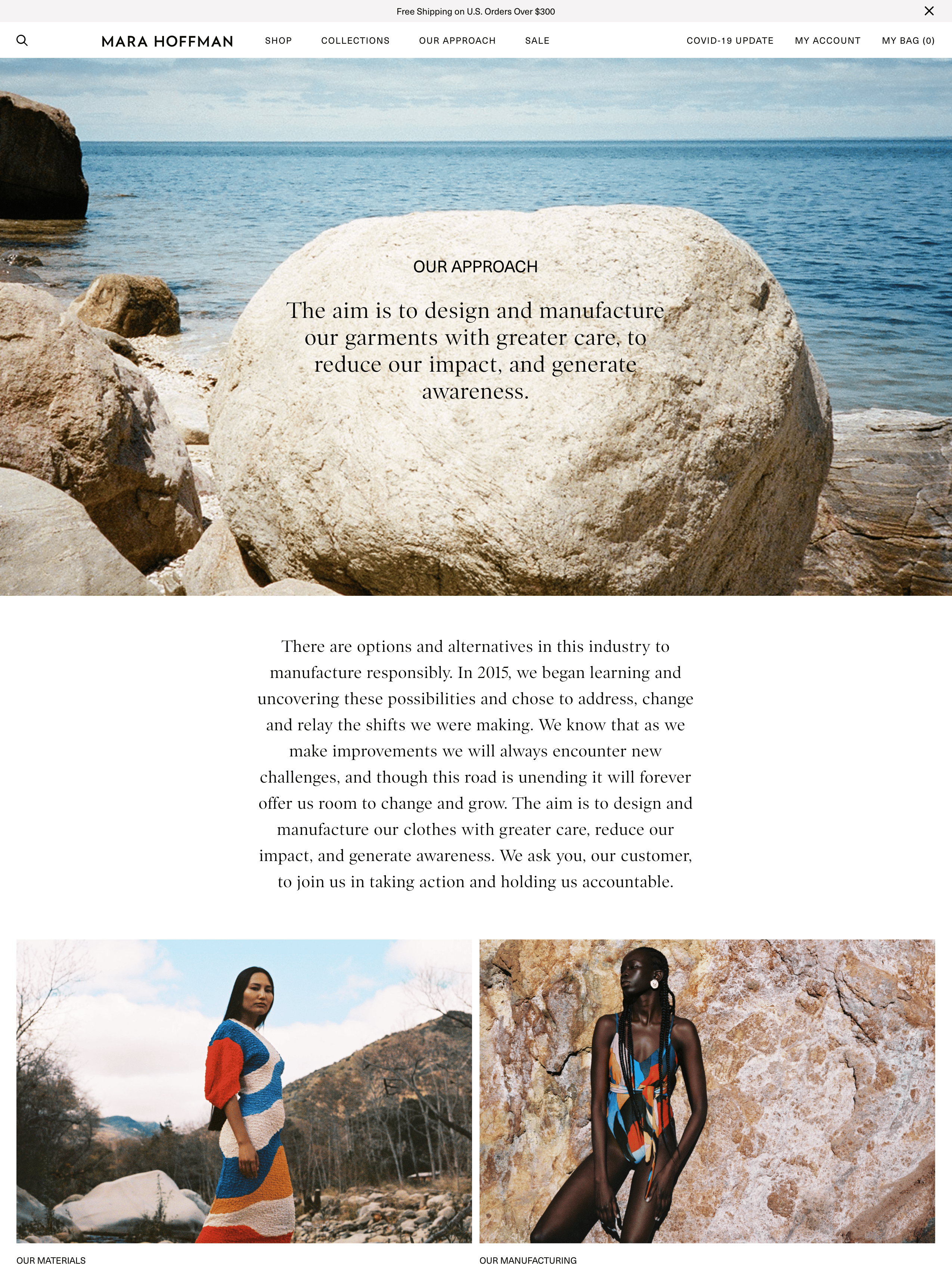
Mention sustainability on your homepage
Some brands are bashful and hide their sustainability efforts by only mentioning them on their product pages or ‘About’ pages. You are doing a wonderful thing as a sustainable brand—why not sing it from the virtual rooftops? Reference your sustainability directly on your homepage. This could be in the form of a small banner at the top of the page with a few words, or it could be a more graphic element showcasing a particular initiative, technology or approach that you employ. Organic cotton brand Pact proclaims their sustainability with a huge headline calling themselves “Earth’s favorite clothing”—a clever pun that neatly communicates their mission. While you may or may not have the help of a copywriter to craft your tagline, a few bold words can go a long way. Everlane also features their sustainability on their homepage via a section about their “promise” to provide “radical transparency.” This links to more information about their “sustainability initiatives” and “About” page, which details their ethical approach. Choose how loud and proud you want to be with your sustainability message, but at the very least include a few words on your homepage.
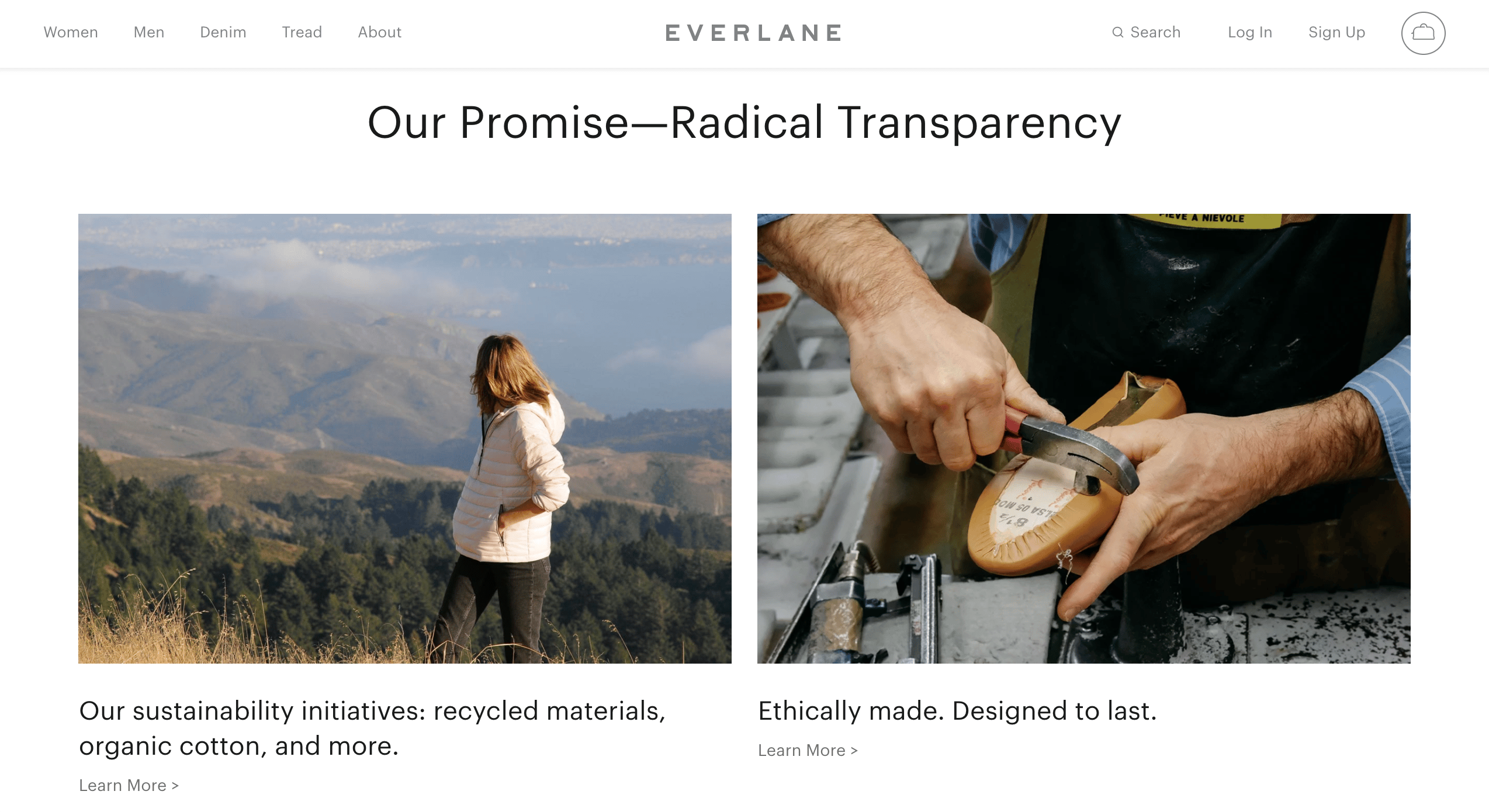
Bring a personal element
Part of the attraction of sustainability in fashion is the human element. Consumers are increasingly conscious of the human toll of their buying choices, throughout the supply chain. So as often as you can, highlight the people who touch your clothes, from your brand’s founder/s and designer/s, to production and distribution staff. A number of sustainable brands are already setting fine examples in this area—Reformation shares photos and video interviews with the people that make their clothing. Los Angeles Apparel also has a whole section of their website dedicated to videos of their staff creating their items, providing full transparency of their workers’ conditions. While not all brands have the resources to do this, it’s something worth considering. In lieu of these kinds of productions, simple short written bios and photos introducing your key staff members can provide that personal touch that many shoppers are looking for.
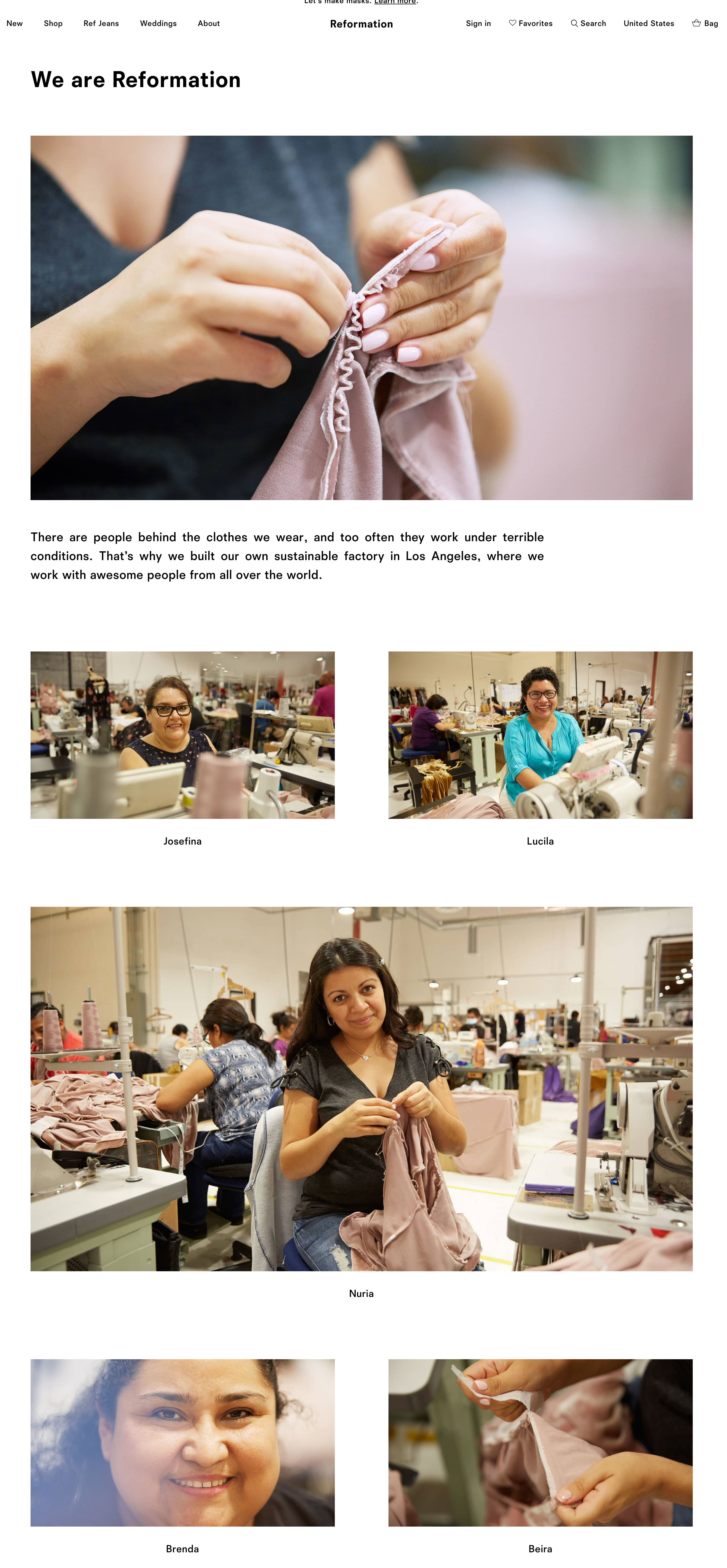
Spotlight your partner organizations
Many brands, sustainable or otherwise, work with multiple organizations to achieve their business objectives. You work so hard to cultivate these relationships and build networks that adhere to your vision of sustainability—why not champion this on your website? You could build a whole page on your webstore that outlines these partnerships and helps foster a more tight-knit community of sustainably focused buyers and providers. Mara Hoffman does this well by sharing their commitments to various organizations, listing how each one helps them achieve their sustainability goals. You can also illuminate your supply chain through informative text and images, as Eileen Fisher does. The brand provides an in-depth look at the “farms, factories and faces” behind their clothing, as well as an up-close look at their factories in the US. Any shopper visiting their webstore can get as much detail as they want, straight away, about how the brand is backing up their claims and “living their values.” If you’re already doing the same, why not spotlight your efforts as they have?
Call out any sustainable materials prominently
Any sustainable products that you’re sourcing or producing should be clearly called out and celebrated on your webstore. Whether it’s deadstock or recycled fabrics that you’re rescuing from the landfill, or sustainable materials you’re starting with from scratch, these are all very worthwhile efforts in sustainability and deserve to be celebrated. Ensure that you highlight all of these details in your product titles and descriptions, both on the individual product page and collection pages. Beyond text, you can push your sustainability message even further through photos. A close-up swatch-style image of your fabric can showcase its quality in an eye-catching way. Reformation does this well, communicating the unique nature of its limited fabrics. Alongside shipping and fit details, the brand also lists the “sustainability impact” of every product, providing estimations of water use that really illuminates the environmental effect of every item they sell.
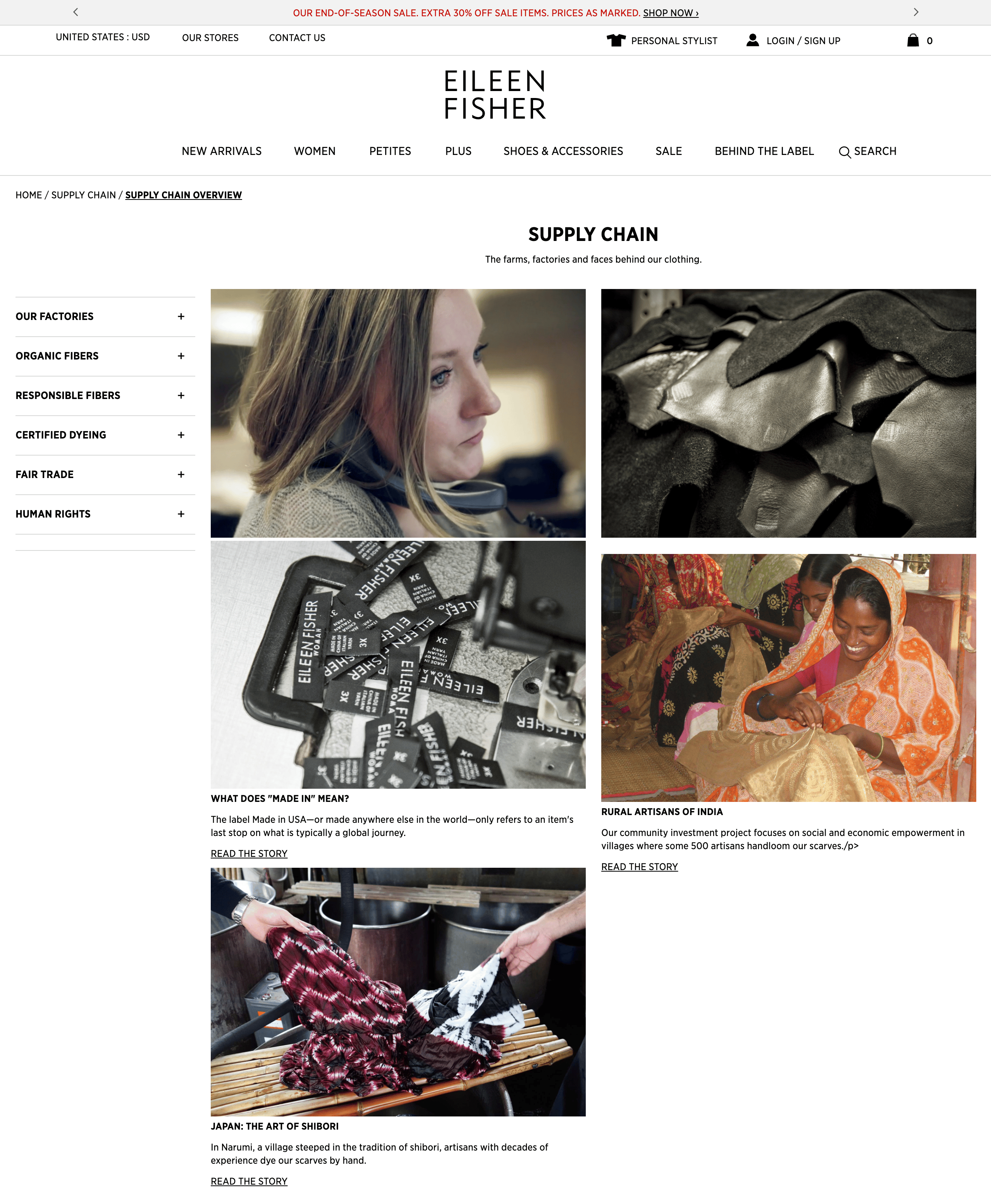
Amplify your sustainability focus on social media
It may seem obvious, but the value of social media in spreading your sustainability message should not be overlooked. Use the content you create on your webstore to inform your posts on socials and boost your brand message to the masses. There is potential for you to build a loyal following for your commitment to transparency, as each post holds your brand accountable. Customers are growing increasingly savvy with keeping brands in check, so you can be sure to increase engagement with every post you make about your noble efforts. It’s also a great way to build your network with other like-minded brands and organizations.
Conclusion
As we said earlier, sustainability is a journey, and a commitment that brands must not take lightly. If you are in the business of being sustainable, we salute you. Show other brands how it’s done and be a model for the future, on your webstore and beyond. We would love to help you reach your goals, so please get in touch with our team if you would like more help with furthering your message.

